Accepted Scientific Name: Melocactus curvispinus subs. caesius (H.L.Wendl.) N.P.Taylor
Bradleya 9: 75. 1991 .

Cactus caesius (Melocactus curvispinus subs. caesius) Photo by: Valentino Vallicelli
Origin and Habitat: Coastal areas of Venezuela, northern Colombia
Altitude: From sea level up to 700 m.
Habitat: They are often found growing in crevices on the on the nude rock along with some perennial grasses.
Synonyms:
See all synonyms of Melocactus curvispinus
Common Names include:
ENGLISH: Melon Cactus, Turk’s Cap, Gray Melon-cactus
SPANISH (Español): Viznaga de Dulce, Buche, Melón, Boche de Borro, Pichigüei
Description: The Melocactus caesiusSN|17710]]SN|17741]] is usually solitary and is now often considered as a subspecies of Melocactus curvispinusSN|17741]]SN|17710]]. The plants shows a considerable variation especially in the number of ribs.
Stem: Depressed globular to oval and often narrowed above, bluish green or greyish green, up to 27 cm in diameter and up to 20(-30) cm tall.
Ribs: 10 to 15 ribs, prominent, deeply furrowed , sharp 2 cm high.
Areoles: Circular, white-wooly about 2-3 cm aprt, slightly sunken in the notches.
Spines: Horn coloured. Radial spines about 6-8 (rarely more), spreading and one central spine similar to the radials, erect, (often missing), about 20 mm long.
Cephalium: Relatively small, broad and low, 3 to 4 cm tall and 7 to 11 cm in diameter whitish-woolly with long reddish-brown bristles, broader than the plants apex.
Flowers: From the cephalium, dark purple to light pink, 18 to 43 mm long and 10 to 25 mm in diameter.
Blooming season: spring to summer open late in the afternoon.
Fruit: Club-shaped to obovoid, dark-pink to wine-coloured slightly lighter at the base up to 3 cm long, 1-1,5 cm thick. Edible.
More...Subspecies, varieties, forms and cultivars of plants belonging to the Melocactus curvispinus group
- Melocactus curvispinus Pfeiff.: Subsp. curvispinus has radial spines that curve backwards strongly, about 28 mm in length. Distribution: widespread in Mexico, Central America, Colombia and western Venezuela up to of 1500 meters of altitude.
 Melocactus curvispinus subs. caesius (H.L.Wendl.) N.P.Taylor: has radial spines that are practically straight and 28 mm (or more) long. Distribution: Caribbean, coastal areas of Colombia and Venezuela at an altitude up to 700 meters
Melocactus curvispinus subs. caesius (H.L.Wendl.) N.P.Taylor: has radial spines that are practically straight and 28 mm (or more) long. Distribution: Caribbean, coastal areas of Colombia and Venezuela at an altitude up to 700 meters- Melocactus curvispinus subs. dawsonii (Bravo) N.P.Taylor: only found in the Mexican state of Jalisco .
- Melocactus curvispinus subs. lobelii (Suringar) Fern.Alonso & Xhonneux
 Melocactus curvispinus subs. loboguerreroi (Cárdenas) Fern.Alonso & Xhonneux: has areoles 2-2,5 cm apart, radial spines medium sized and very recurved, seeds spherical-ovoidal and smaller than in the other subspecies. Distribution: Dagua and Loboguerrero (Choco, Colombia).
Melocactus curvispinus subs. loboguerreroi (Cárdenas) Fern.Alonso & Xhonneux: has areoles 2-2,5 cm apart, radial spines medium sized and very recurved, seeds spherical-ovoidal and smaller than in the other subspecies. Distribution: Dagua and Loboguerrero (Choco, Colombia). Melocactus delessertianus Lem.: has about 10 cm. high with 12 to 15 ribs. Radial spines 8 or 9, central spines 2. Distribution: Veracruz, Mexico.
Melocactus delessertianus Lem.: has about 10 cm. high with 12 to 15 ribs. Radial spines 8 or 9, central spines 2. Distribution: Veracruz, Mexico. Melocactus guitartii León: it is about 10 cm broad and 12 cm high, densely armed with long spreading rigid spines. Distribution: Arroyo Blanco next to the lake of Manaquitas, Sancti Spiritus, Cuba.
Melocactus guitartii León: it is about 10 cm broad and 12 cm high, densely armed with long spreading rigid spines. Distribution: Arroyo Blanco next to the lake of Manaquitas, Sancti Spiritus, Cuba.
Notes: The most remarkable part of a Melocactus is its cephalium a bristle-coated structure on the summit of the plant, only Melocactus , and the similar genus Discocactus possesses this type of permanent, apical, hatlike appendage. It’s only when a Melocactus reaches maturity that the cephalium begins to grow. Cylindrical, with a diameter distinctly smaller than that of the plant body below, the cephalium will keep growing for the rest of the plant’s life, but the body of the plant stops growing the moment the cephalium starts to form. As the plants age the cephalium doesn’t increase in circumference it will steadily grow taller.
.
More...Bibliography: Major references and further lectures
1) Stuart Max Walters “The European garden flora. 3.[Angiospermae], Dicotyledons. [Casuarinaceae to Aristolochiaceae]” Cambridge University Press, 1989
2) Edward Anderson “The Cactus family” Timber Press, Incorporated, 2001
3) David R Hunt; Nigel P Taylor; Graham Charles; International Cactaceae Systematics Group. "The New Cactus Lexicon" dh books, 2006
4) Urs Eggli, Leonard E. Newton "Etymological Dictionary of Succulent Plant Names" Birkhäuser 2004
 Cactus caesius (Melocactus curvispinus subs. caesius) Photo by: Valentino Vallicelli
Cactus caesius (Melocactus curvispinus subs. caesius) Photo by: Valentino Vallicelli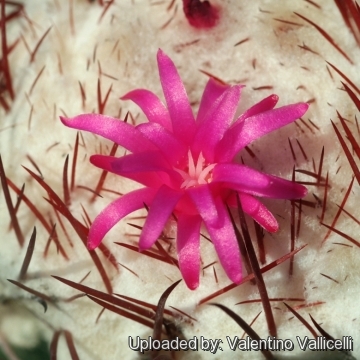 Cactus caesius (Melocactus curvispinus subs. caesius) Photo by: Valentino Vallicelli
Cactus caesius (Melocactus curvispinus subs. caesius) Photo by: Valentino Vallicelli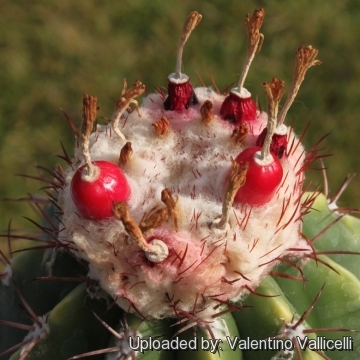 Cactus caesius (Melocactus curvispinus subs. caesius) Photo by: Valentino Vallicelli
Cactus caesius (Melocactus curvispinus subs. caesius) Photo by: Valentino Vallicelli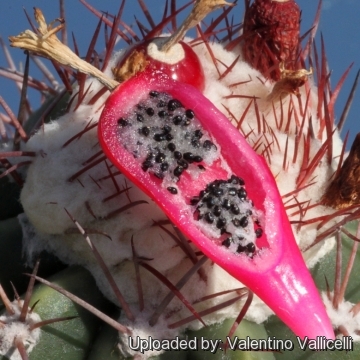 Cactus caesius (Melocactus curvispinus subs. caesius) Photo by: Valentino Vallicelli
Cactus caesius (Melocactus curvispinus subs. caesius) Photo by: Valentino Vallicelli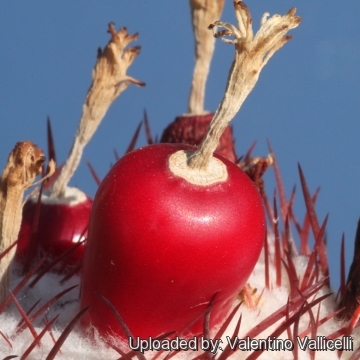 Cactus caesius (Melocactus curvispinus subs. caesius) Photo by: Valentino Vallicelli
Cactus caesius (Melocactus curvispinus subs. caesius) Photo by: Valentino Vallicelli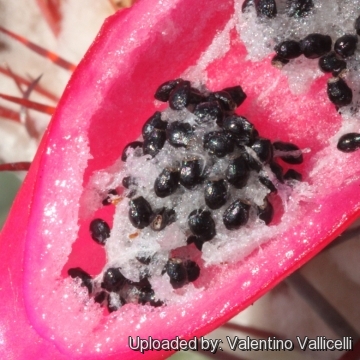 Cactus caesius (Melocactus curvispinus subs. caesius) Photo by: Valentino Vallicelli
Cactus caesius (Melocactus curvispinus subs. caesius) Photo by: Valentino Vallicelli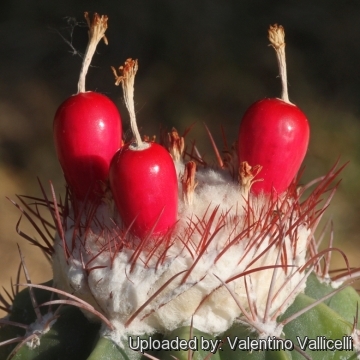 Cactus caesius (Melocactus curvispinus subs. caesius) Photo by: Valentino Vallicelli
Cactus caesius (Melocactus curvispinus subs. caesius) Photo by: Valentino Vallicelli Cactus caesius (Melocactus curvispinus subs. caesius) Photo by: Valentino Vallicelli
Cactus caesius (Melocactus curvispinus subs. caesius) Photo by: Valentino VallicelliCultivation and Propagation: These cacti are not the easiest things to grow and aren’t plants for beginners. Melocactus guaricensis grows from April to October, it can’t endure long stretches of total dryness, and also too much water will rot it, as its weak root systems tends to be inefficient at sucking up water from wet soil. Nonetheless, again as a result of their tropical origins, they need a fair amount of water, but allow the soil to dry quite a bit before watering again.
Melocactus rests from October to April but can’t stand cold, or even fairly cool temperatures, so is indispensable to keep it above 8-12°C at all times, severe damage or death occurring at temperatures that the great majority of cacti wouldn’t mind in the least and prefer more frequent water in winter than other cacti, say once a month. Do not feed in winter.
The root system is weak and generally resents being repotted and can take a long time to re-establish. The soil mix should be very quick draining, prefers very bright light, not as much as the most arid growing cacti, but plenty nonetheless.
Propagation: Exclusively by Seeds. Sow in February-march in a light, sandy, porous soil. Cover germinating tray with glass to prevent seed from drying out. Germination is most successful at a temperature of 18 to 22° C.
More...
Your Photos

by Valentino Vallicelli

by Valentino Vallicelli




















